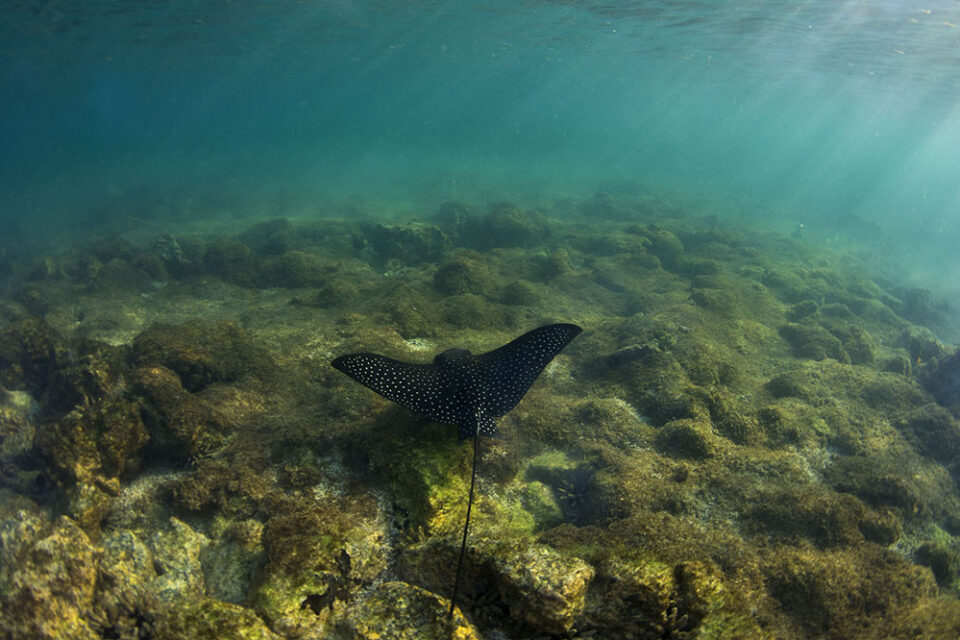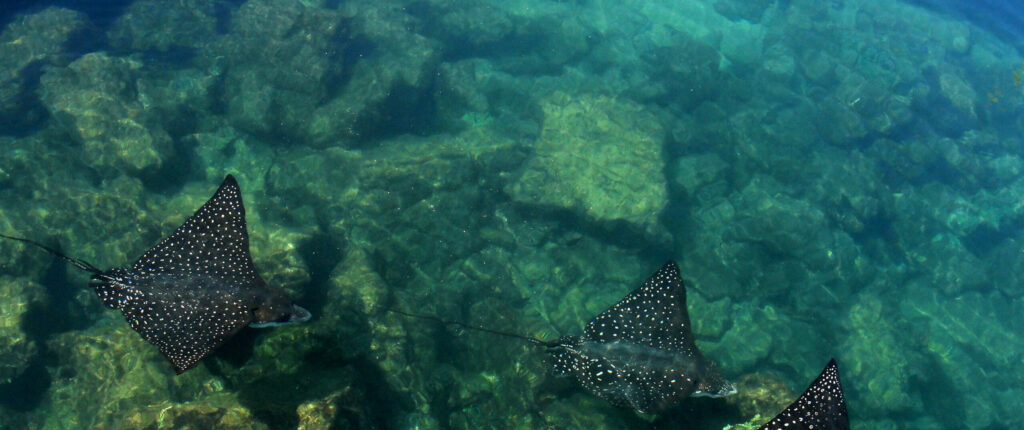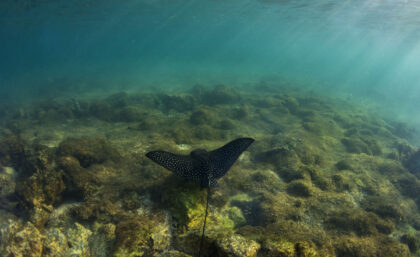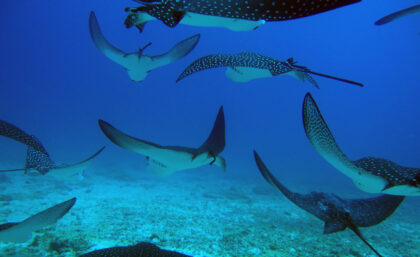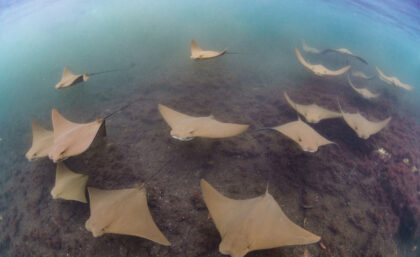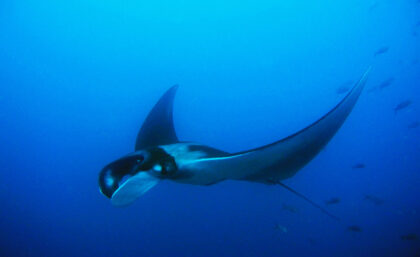
Common name:
Ray
Scientific name:
Myliobatiformes spp.
Spanish name:
Raya
Conservation status:
Near Threatened
Average size:
1 - 7 metres
Overview
There are various ray species in Galapagos, all quite striking for different reasons. Spotted eagle rays have a black top side with luminescent-looking white dots, manta rays can have a width of up to seven metres and you might even miss the golden rays as their sandy coloured topsides are fantastic camouflage against the sea floor.
Rays are cartilaginous fish that are closely related to sharks. They have a very flat, circular body shape and a long tail. Manta rays are named after their flat bodies, as manta translates to ‘carpet’ in Spanish. They are very graceful swimmers and instead of swimming side-to-side like sharks, rays move in an undulating top-to-bottom motion. When they are swimming, their fins look like wings during flight. Their flattened bodies also allow rays to hide against the sea floor. For example, stingrays can wait underneath a thin layer of sand whilst waiting for their prey to arrive.
Rays of Galapagos in Galapagos
Photo gallery
Click an image to view larger
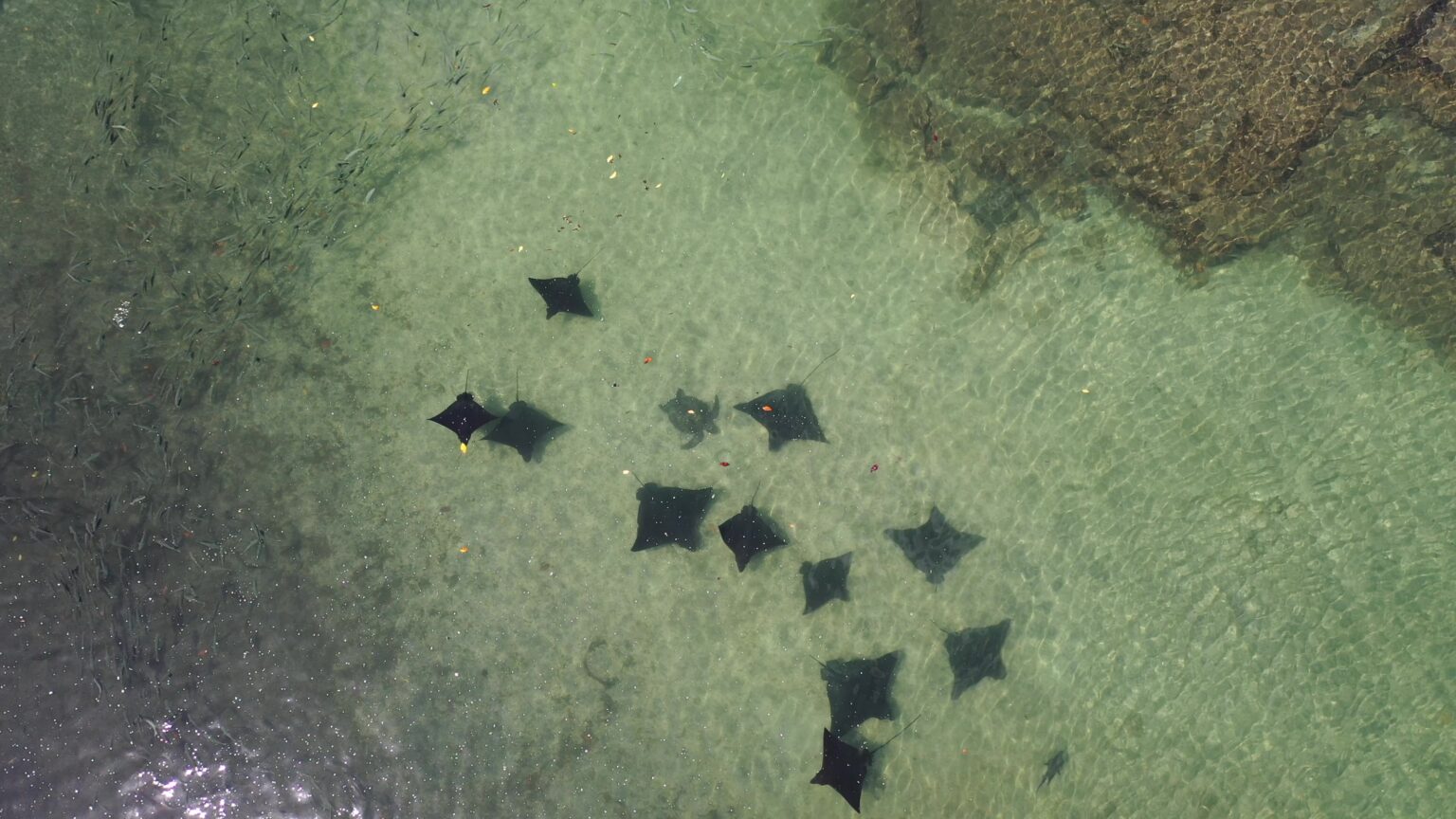
Read more about rays in Galapagos...

